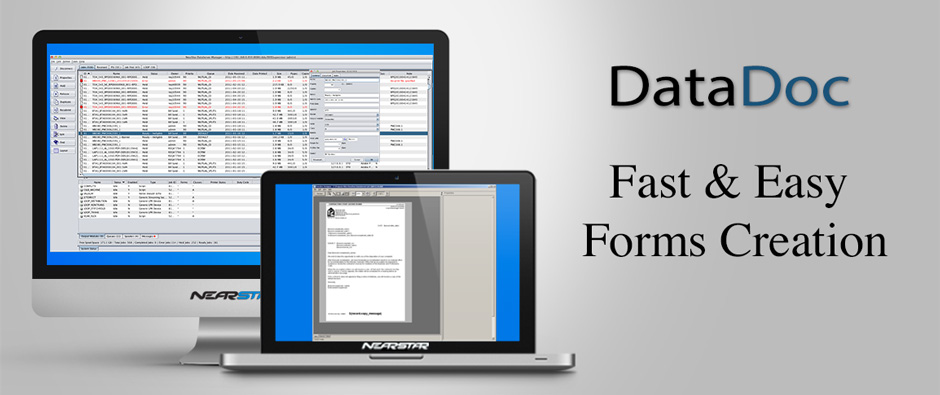DataDoc is an embedded tool for dynamically generating reports and print output in PostScript as well as providing a simple path for variable data merging.
DataDoc uses XML for both templates and data, allowing great design and output flexibility when it comes to document creation. This is especially useful when integrating data from existing or legacy systems, as most data sources (database tables, report files, CSV files, etc.) can be readily mapped to provide an XML structure. DataDoc provides the ability to merge static forms defined in XML with extracted field data. Using the DataDoc Designer, the forms are laid out in a WYSIWYG manner, which can include images, lines, shading, and static text
Overview
Templates are drawn using DataDoc Designer, a page layout application. The native format of DataDoc templates is XML, allowing manual editing or even generation dynamically. DataDoc Designer allows you to proof your templates with live data, giving you a true WYSIWYG display of what the final output will look like without having to waste paper printing. DataDoc supports a full tool set of page elements, such as text, lines, boxes, images (gif, jpg, tiff) and more. Advanced text features include fractional font sizes, multiple styles in a single text element, arbitrary alignment and word wrapping within a bounding box. All page elements can be rotated and individually colored.
Multi-page templates allow you to easily add cover pages, separators, summary pages and more. Each page in a template can have a unique page setup, including page size, color, orientation, paper stock and duplex mode. This allows the design of complex print output that can utilize a variety of different paper and media types such as tabs to complete your document.
XML Based Data Processing
DataDoc natively reads XML data sources. Created Templates can contain “data keys” that can be replaced with XML data. Data keys for repeating XML data elements will generate repeated output when applied to a DataDoc template. In this way, for instance, a single page template can generate multiple output pages.
You can mix data keys inline with static text or as stand-alone elements, and can be formatted using a variety of data formatters (numeric, date, etc.). Data keys also allow for variable image substitution dynamically.
DataServer Integration
The DataDoc composition engine runs under the NearStar DataServer control, resulting in a seamless integration within the customer environment. It provides for ease of creating output during your application composition. Being a process running within DataServer provides a centralized point of control for all jobs and is robust enough to facilitate a variety of job management and data conditioning features. This simplicity of creation and execution allow the custom solution NearStar can create for you to drive multiple high-speed network printing,production and workgroup, etc.

